Maintaining the perfect moisture level of weed is a delicate process. Most of us have experienced the horror of realizing our weed has gone bone-dry. Dry weed has a number of negative characteristics, including loss of flavor, loss of aroma, and loss of potency. No worries, though, we’ve put together a comprehensive guide on how to rehydrate weed.
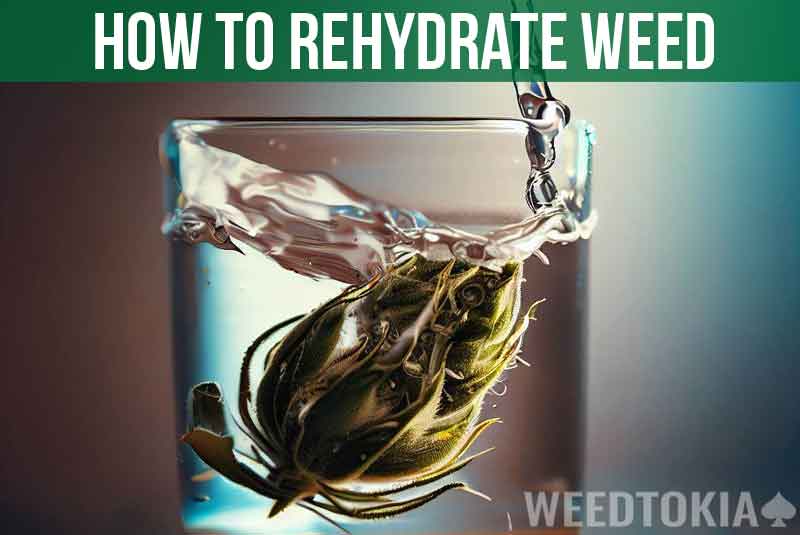
Remember, you should be able to enjoy dank, sticky buds for as long as your stash lasts as long as it’s stored correctly, in the dark, and in a sealed jar. But in the real world, we know it is much more difficult than it sounds to keep your cannabis at its peak flavor and potency. If your weed has gone a little dry here is a list of tips to get it back to its former glory.
Table of Contents
List of Ways to Rehydrate Weed
Every cannabis consumer has seen dried-out marijuana at some point during their lifetime. Find out how you can rehydrate dry buds with some DIY methods below.
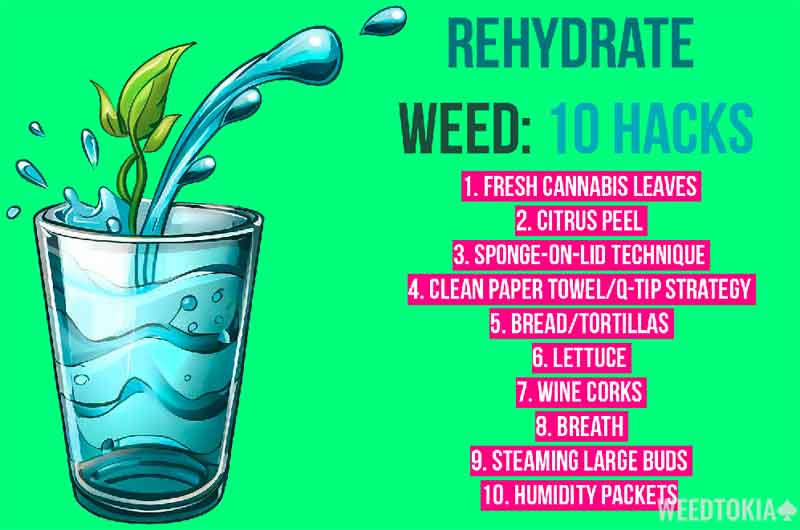
1. Fresh Picked Pot Leaves
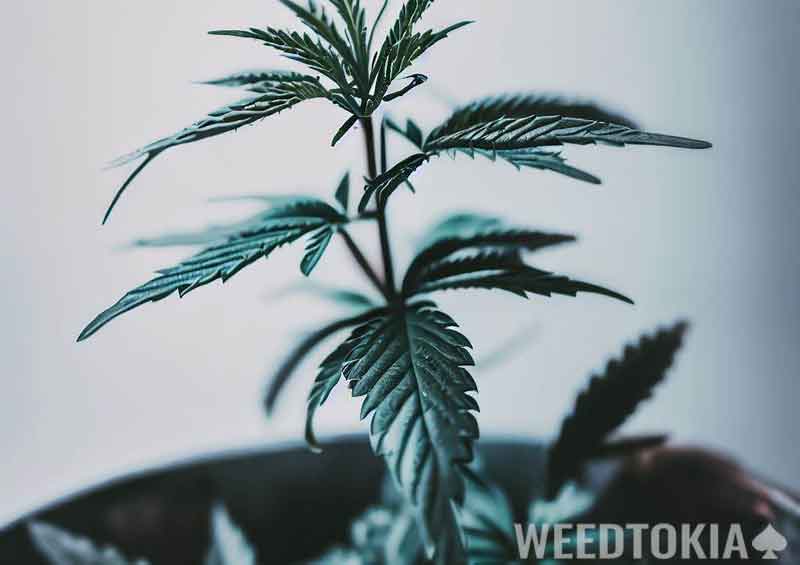
It makes sense that fresh-picked pot leaves, if you can get them, will naturally rehydrate your bud effectively. This is one of the most effective DIYs you can do with a low risk of growing mold in your stash. Simply put some fresh cannabis leaves in your storage container and over time the moisture in the leaves will naturally rehydrate all of your weed. Be sure to include enough leaves otherwise this won’t be as effective.
2. Sponge on the Inside Lid
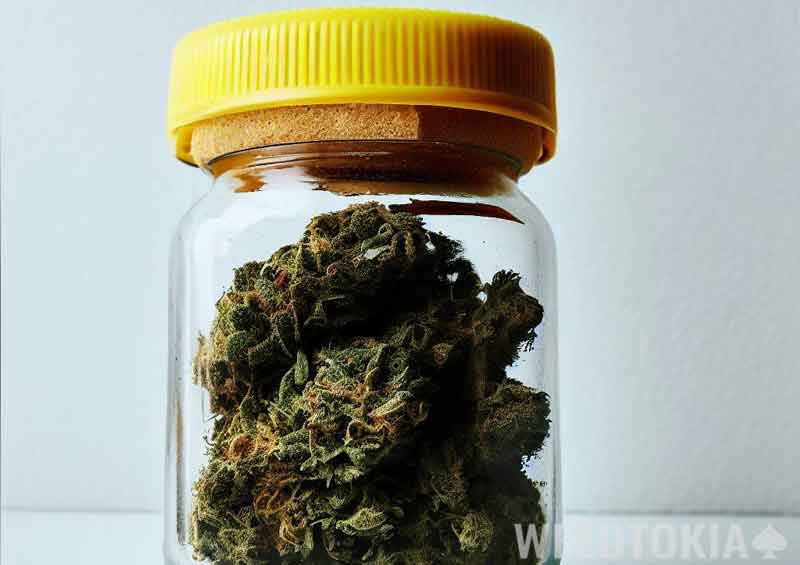
This is by far one of the most effective ways to rehydrate weed, and it doesn’t carry a huge risk of mold. Many people swear by this method because it doesn’t touch the bud, and you can get the moisture level just right. Soak a small piece of sponge and wring it out. Glue or tape it to the lid of your stash jar. It’s one of the simplest and most effective methods.
3. Clean Paper Towel
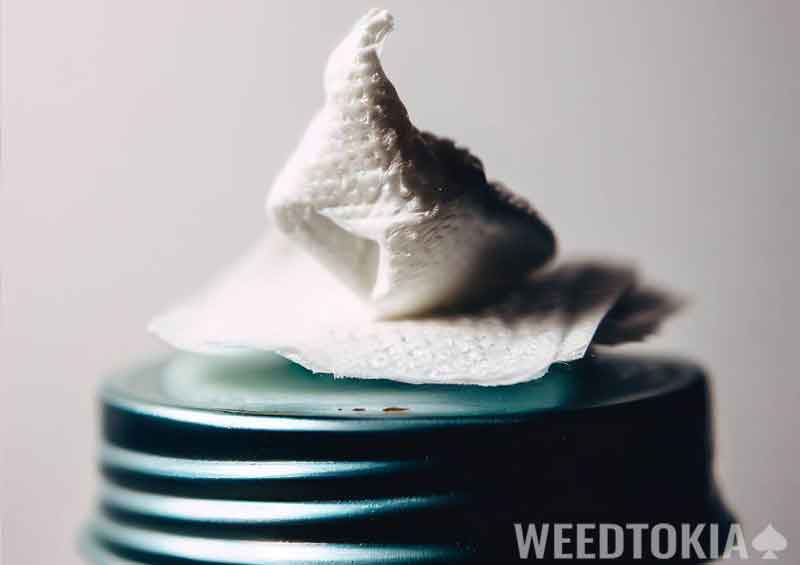
This is similar to the Sponge on the Lid Trick, but with a clean paper towel with a couple of drops of water, or wet both ends of a Q-tip and stick it in with your stash jar. Keep an eye on it and watch for signs of mold, like discoloration. This is a great method because almost everyone has some spare paper towels on hand.
4. Soak Your Cork
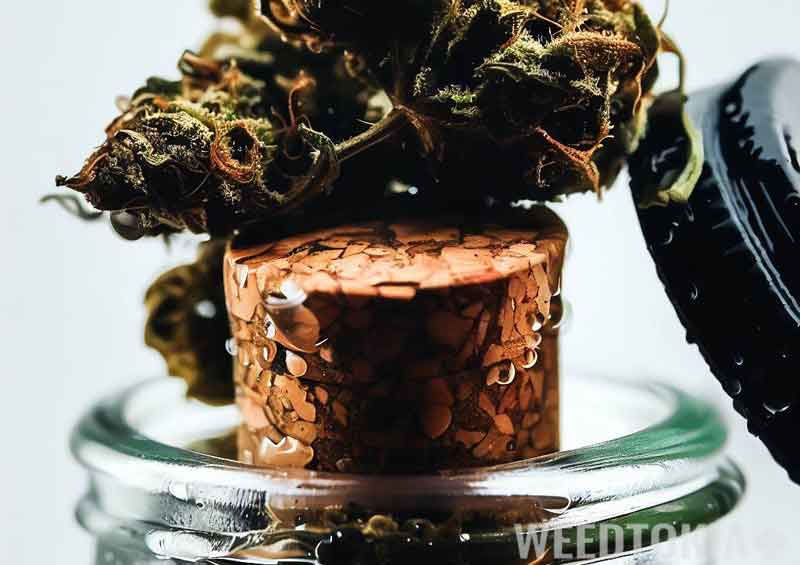
Take old wine cork(s) and submerge them in water for about 30 seconds or so. Dry them off and put them in with your bud.
5. Citrus Peel Inside Your Storage Container
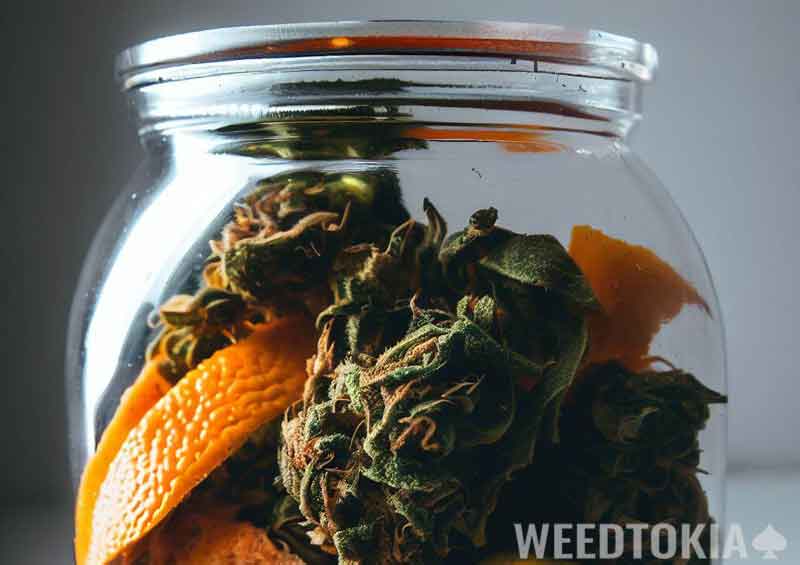
This one carries a risk of mold but certainly does do the trick. It will also leave a citrusy scent and taste to your stash, which some people actually like. Simply cut some citrus peel with a clean knife and throw it into your jar. Watch for mold, though! This should not be a long-term method.
6. Bread/Tortillas
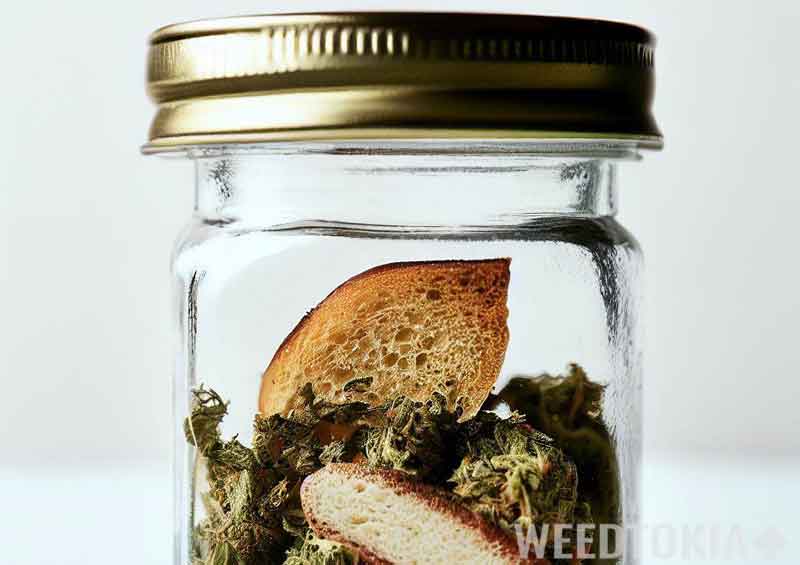
Tortillas have long been the favorite of stoners everywhere. Just like with brown sugar, you can throw a piece of bread or tortilla in your stash to reintroduce moisture. This is better than the citrus peel method if you’re concerned about taste.
7. Lettuce
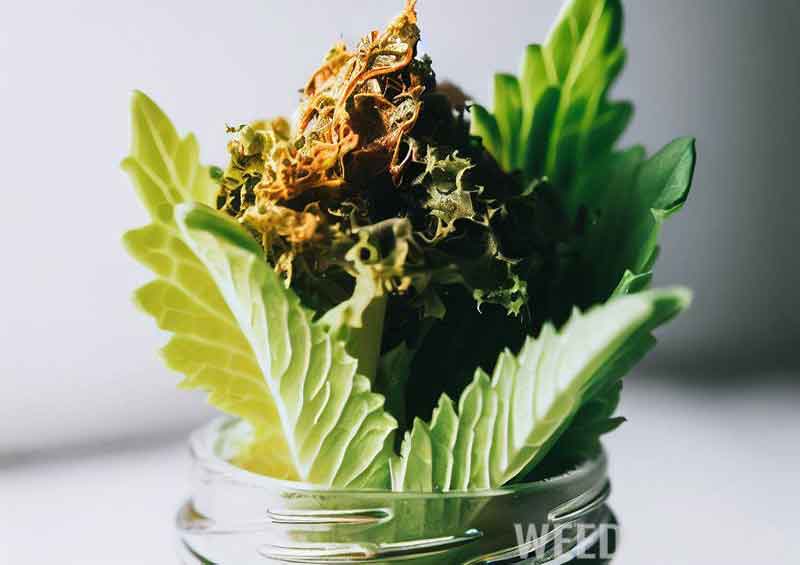
This one isn’t anyone’s favorite; I don’t think. It’s too high of a risk of mold unless you’re only throwing it in for a short time – like 2 hours max. Set an alarm on your phone if you’re anything like me. Try to put your lettuce somewhere where it won’t touch your devil’s lettuce.
8. Your Hot, Gross Breath
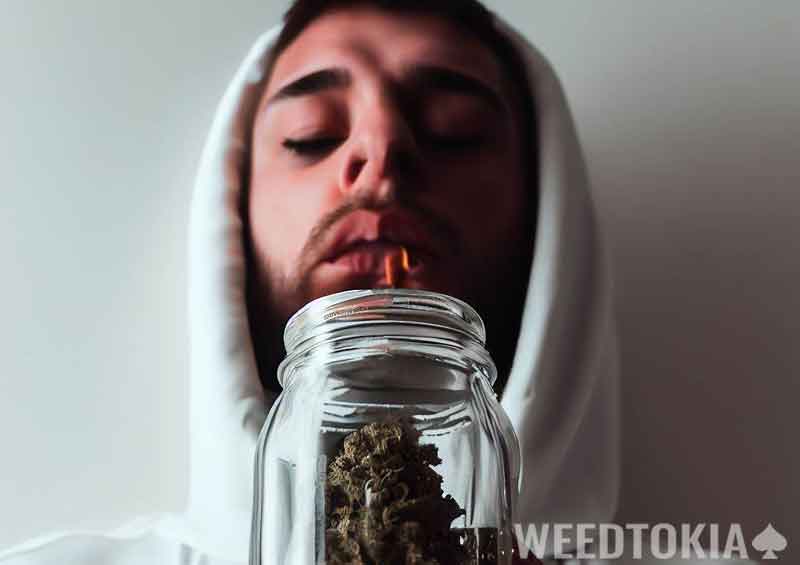
Sounds appetizing, doesn’t it? Open your jar and blow a big, hot breath into the jar, then close it for a day or so. It’s gross, but if it’s your own stash that you don’t share, who am I to judge?
9. Steam Them
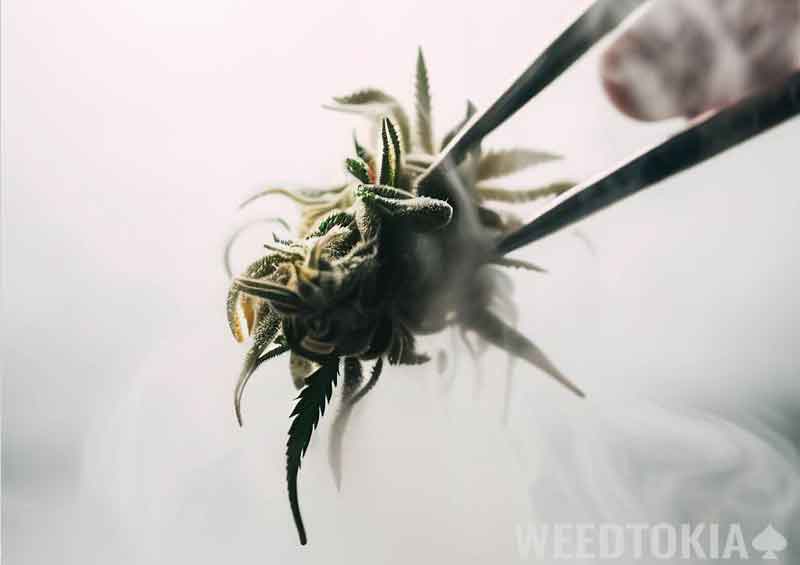
This is where you have to tread lightly if they are big boys. This method requires close monitoring, and it’s crucial not to overdo it. Boil water on the stove once you have it at boiling point. Use tweezers or something similar to hold the bud over the steam for 5-30 seconds.
10. Humidity Packets
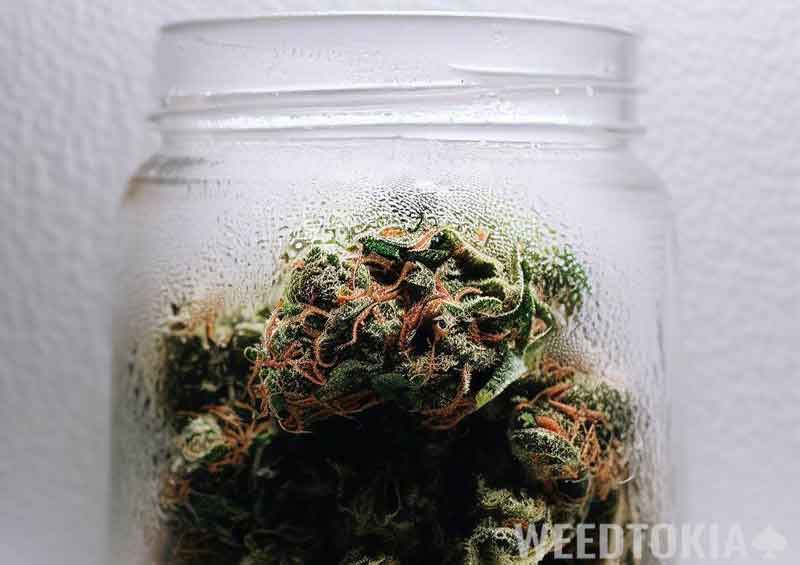
Humidity packets are more widely available now, and they’re relatively cheap – around 60 cents each. Jars should be thoroughly washed and dried before use. Put the humidity packet at the bottom and the weed on top.
You need a fresh humidity packet (it should feel soft and cool) to get the best results. The humidity packet and the weed should not touch, according to some people.
Having said that, I haven’t noticed a difference, and you want the jar to contain as few foreign contaminants as possible if you are going to make an effort to space them apart. Seal the jar tightly as well. You lose moisture every time you open the jar, so don’t keep reopening it.
I realize I’ve said this 4500 times, but it’s very important that whatever you’re using doesn’t touch the bud.
Avoid Dry Cannabis Buds: How to Store Weed Properly
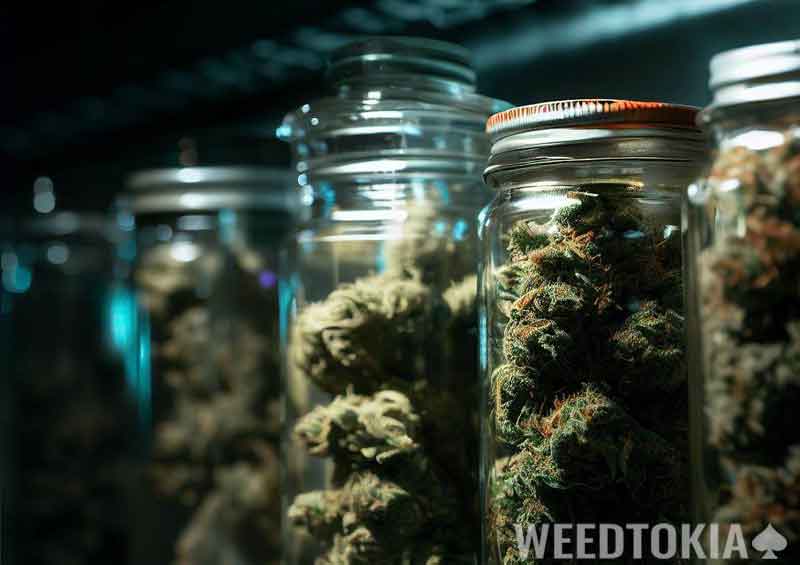
Prevention is always the best medicine for just about anything. Storing your weed properly is an easy fix to avoiding it drying up or growing mold. In dry marijuana, much of the flavor and potency has been lost, while moldy marijuana can be dangerous to smoke.
A baggie of weed isn’t going to keep its quality, and besides, you’re not in high school anymore. Get yourself a nicer container! Especially if you plan to keep it long-term. You will soon see your sticky buds turn brittle by simply relying on a bag.
You can ensure your supply is still smokable next time you reach for it by taking a few simple steps. It’s possible to store weed for an extended period of time in several different ways.
Light, temperature, humidity, and air can all deteriorate your weed. Therefore, simply putting nugs in a plastic bag is not going to cut it for storing weed.
Here are some methods you should not use to store weed. In theory, retaining freshness in a fridge or freezer is similar to how food stays fresh. However, the temperature and humidity of various refrigerators fluctuate, which isn’t good for keeping your weed fresh.
In most cases, you shouldn’t freeze weed, either. The cold temperatures separate the trichomes from the buds in freezing, so you can make a hash that way. Trichomes are packed with all the stuff cannabis is good for, like cannabinoids and terpenes.
You don’t want your trichomes falling to the bottom of your jar or getting moldy, so keep your jar out of the fridge and freezer. It’s better to leave weed somewhere with stable humidity and temperature.
You have more to worry about than just the cold. If you put your weed near a heater or oven, it’ll dry out too fast.
We recommend an airtight glass container to keep your weed safe from the external forces that work against it. There are plastic airtight containers, but plastic makes buds sweat.
You can store stash for a long time in a glass mason jar for a very low price. However, any airtight glass container will do. For your buds to be completely protected from the air, the top should be completely sealed. Keep your buds away from light and heat after they’ve made it into a glass jar.
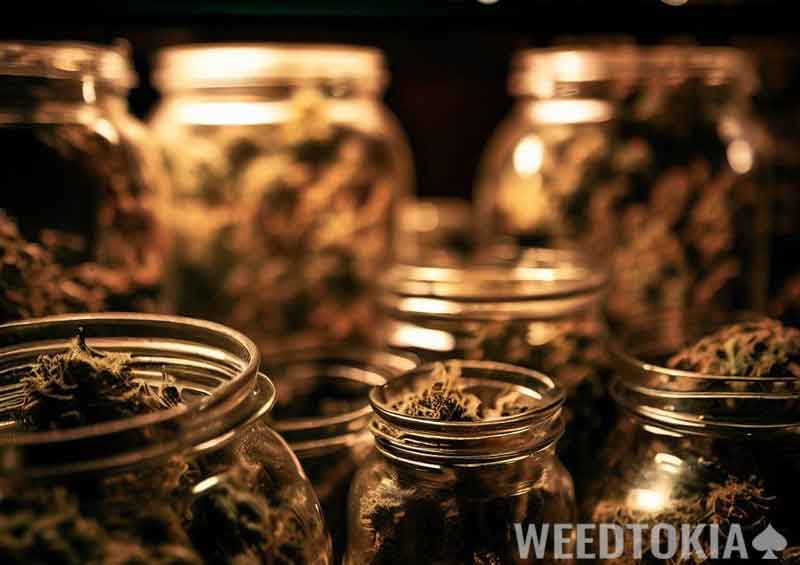
You can also get blacked-out ultraviolet airtight glass jars to protect your weed, even if it’s left somewhere with lots of light. All you have to worry about is the temperature in an airtight ultraviolet glass jar.
Keep your buds fresh in a UV jar as long as you don’t store them over the stove or somewhere hot.
If you burn through your stash within a week or two, keeping it in a cool, dark place in a glass container should be all you need!
You can, however, add a humidity pack to your airtight storage container to ensure your buds remain stinky and dank for months. This is especially helpful after a harvest if you are a home grower.
A humidity packet comes in varying levels of humidity; already dry material will require a high relative humidity level to recover. A humidification pack can help preserve the quality of fresh, properly cured cannabis. In these little packets, you will find salts and water in a combination that helps maintain the right humidity in your container. You can get them for a reasonable price, and they last for a few months.
You can protect your marijuana for the long haul if you don’t want to smoke weed that tastes harsh and has poor flavor.
An airtight glass container with a humidity pack in a cool, dark place should keep weed fresh for months. The shorter-term storage of stashes should be adequate with an airtight UV glass jar.
Ideally, the relative humidity level for cannabis should range between 59 and 63 percent. By going any higher, you are putting yourself at risk for growing mold due to moisture trapped in the air.
Another option if the mood strikes you and you are willing to shell out some extra cash is a humidor specifically made for cannabis.
Avoid the Need to Rehydrate
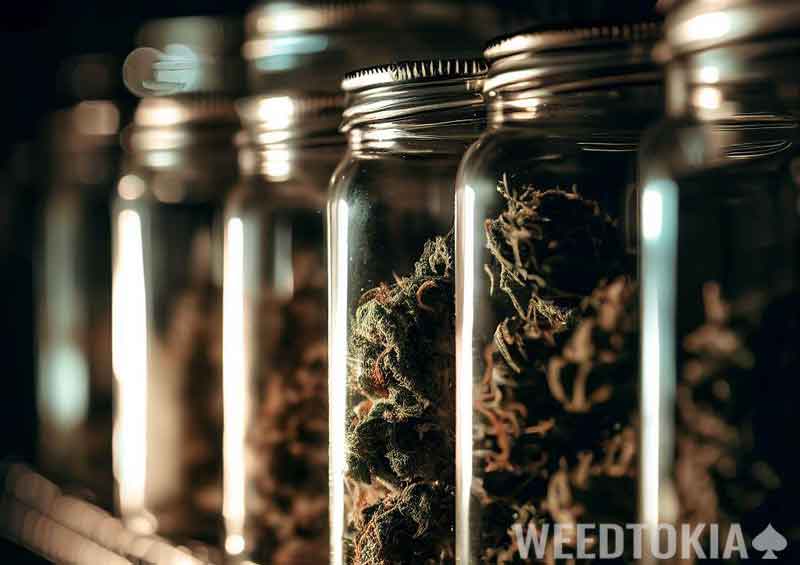
It is by far, the most common cause of dry weed that is due to insufficient storage. A plant that has been exposed to excessive light and air will usually become dehydrated as a consequence.
The most important thing when it comes to storing your cannabis is that it should be kept in a dark place, at room temperature, and enclosed in an airtight glass container. You will also be ensuring that your marijuana is stored in an environment with a respectable relative humidity level of 62% by maintaining these conditions.
However, it is important to note that excessive moisture can actually lead to mold, which is yet another problem that cannot be resolved. Fungus-covered weed is only good for trash cans, as it can harm your respiratory system.
The key to preventing damage is to prevent it from happening in the first place. There are essential things to keep in mind: avoiding too much light, moisture, and air and maintaining a moderate temperature.
In the smallest of dispensaries, or sometimes even in a larger dispensary, marijuana can be inappropriately stored, or it can over-dry so that you end up with some crispy chunks after harvest. If you find yourself with crispy chunks, read on and see how you can rehydrate your supply.
The Problem With Dry Cannabis
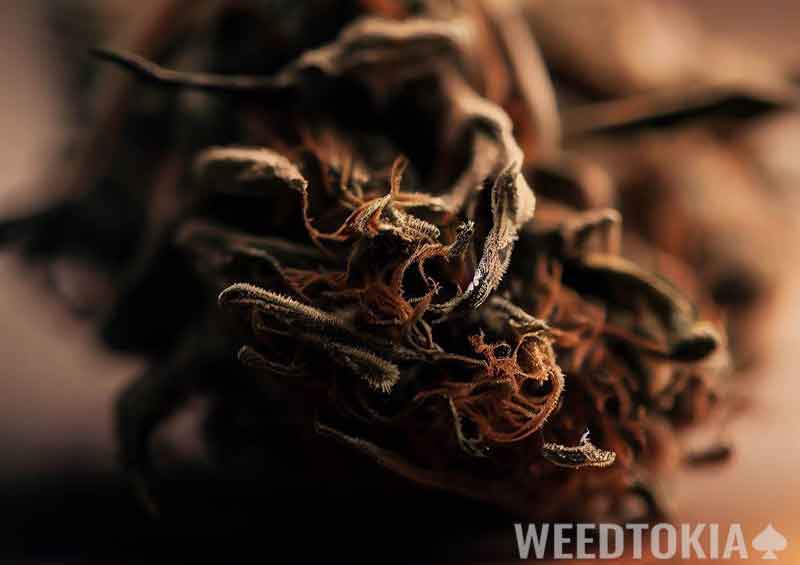
Cannabis that has been overdried has less aroma and flavor (terpenes), and it burns hotter and faster. As a result, customers report having a negative experience, which typically means consuming more cannabis to achieve the desired experience.
A prolonged, rapid drying process causes the essential oils (terpenes) to be lost, which is primarily the result of too long or rapid drying. During drying, lighter terpenes and those with lower evaporation points dissipate first, before the water.
When the ambient relative humidity (RH) is very low, such as in Arizona, Colorado, or Nevada, overdrying cannabis can be a problem. It is not unusual for perfectly dried and cured buds from California to crumble when touched within minutes of being left on a hotel table in Denver in winter.
The quality of dried and cured cannabis depends upon many factors, starting from the moment it is harvested and continuing until it is used. Uneducated growers take a “dry it fast, so we can sell it fast” stance without understanding the nuances and delicate qualities of cannabis.
Others may choose to dry the plants harvested on Thursday next to the plants harvested on Tuesday, next to the plants harvested on Monday, etc. It is at that time that the moisture released by the plants harvested on Thursday uses up moisture in plants harvested the previous Monday. It is also essential to have the ability to intake fresh air and exhaust heat and moisture if large quantities of cannabis are to be dried properly and evenly. I have also seen drying rooms that use heaters and dehumidifiers alone, making it difficult to maintain control of the environment.
Is Drier Weed Safer?
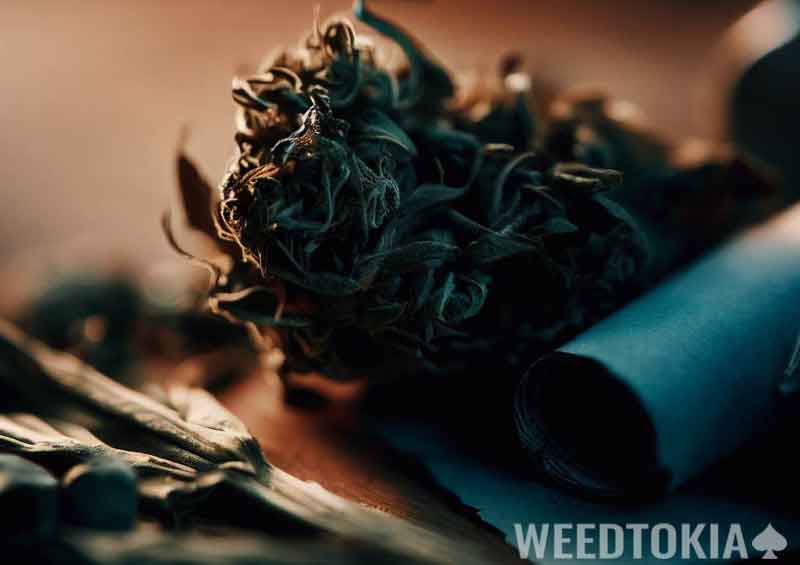
To avoid fungus or microbial growth, some commercial cannabis producers short-dry their product. Early legalization years were fraught with contamination problems. A lot of early-legalization cannabis was dried and cured the same way it had been for decades.
Some growers chose to overdry their cannabis rapidly to minimize infection risk. Two-way moisture packs were used by some cultivators to rehydrate cannabis. They absorb moisture to maintain a given level of moisture in the cannabis. Generally, 54% to 65% is a good level, varying mostly based on personal preference or how long the cannabis will be stored. It is common for mold and bacteria to grow on cannabis when the moisture level exceeds 65%. Humidity packets can also draw moisture from wet cannabis, meaning they can speed up the drying process.
Despite this seemingly savvy approach, it does result in terpene loss. Growers sacrifice the buds’ aromatic quality by rapidly drying and then rehydrating. Plant terpenes disappear once they evaporate, though it is unknown by how much.
How Do I Know If My Weed Has Gone Bad?
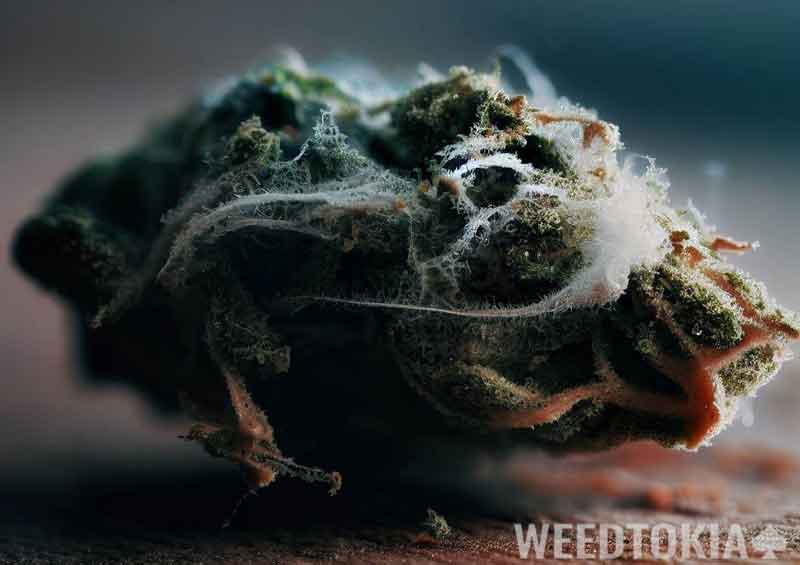
Stuff happens. Your weed disappears when you misplace it. Unfortunately, the supply doesn’t turn up until months or years later, just when you need it most. Can we still use this pot? Is it possible for weed to go bad? Does marijuana have a shelf life? Is there such a thing as stale weed? Here’s what you need to know. (Even though we both know you’re just going to smoke it).
In fact, weed never really “goes bad” since its chemical composition changes rather than degrading. Just like your kitchen’s vegetables and herbs, marijuana is a plant. Molecules oxidize, and cells decompose. Over time, weed loses its potency just like dried oregano in a spice rack. You won’t be killed by old weed, but you won’t be that high from it either.
The recently-found stash that appears to be nothing more than dried-out powdery leaves will probably not be very enjoyable to smoke. You should not smoke moldy weed unless you want to risk heart and lung disease. If you store weed in a place that is too moist, mold can grow because it likes moist conditions without much airflow.
1. Listen to the Sound
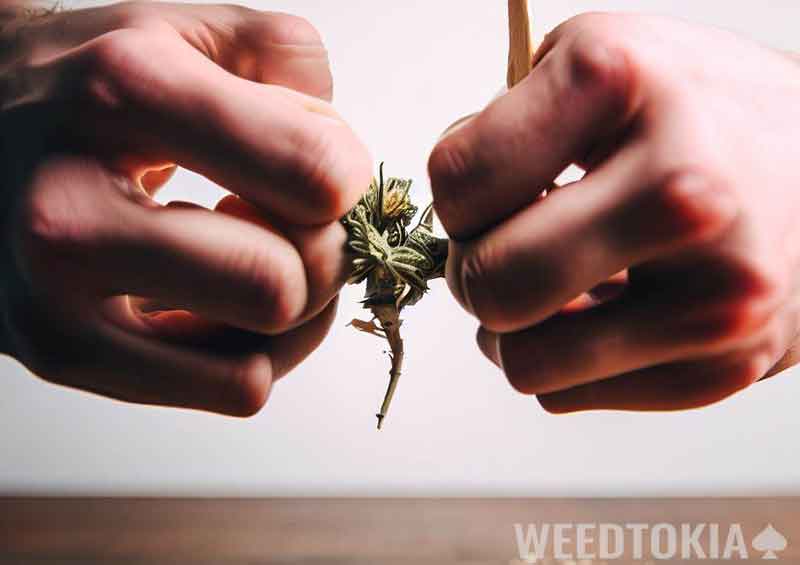
Your rediscovered weed should snap with your fingers when you pull it apart instead of crackling, which can indicate that it is too dry. It’s important to look out for mold if your weed is silent.
2. Smell the Weed
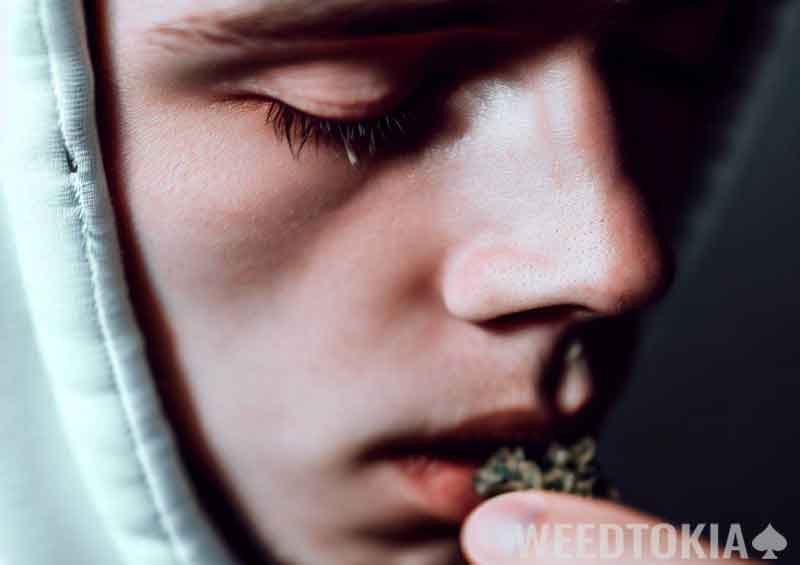
If your old stash is smelling musty, or if it smells like urine or locker room, mold is probably to blame. Poor storage or pesticide contamination can result in chemical or plastic scents. You might not notice much of a difference in the smell of weed that’s been around, but it should not smell bad. Marijuana should smell like marijuana.
3. Light it Up

It’s pretty obvious just by tasting if a stash has really gone bad if it doesn’t appear to be moldy. There shouldn’t be any off-flavors in weed.
It won’t harm you to smoke poor-quality weed (with mold being an exception) – it will just be less enjoyable than the fresh stuff. The plant may not get you as high because it contains less THC, but that’s pretty much it. You’ve rediscovered a treasure!
Signs Marijuana Is Moldy: Top 3 Signs
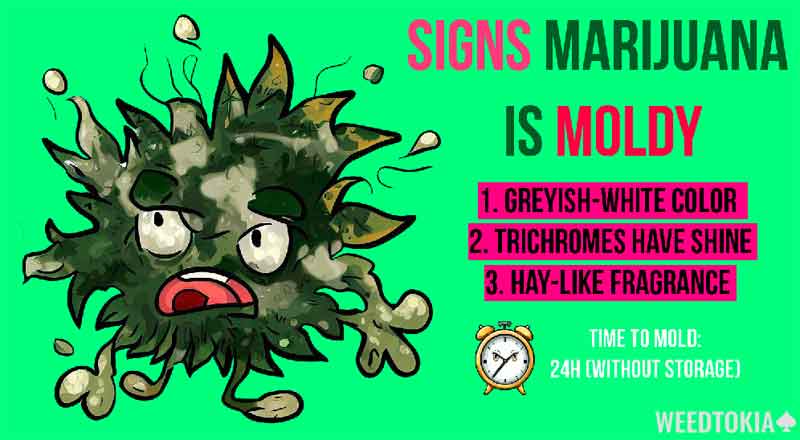
It is pretty easy to spot mold on bread or cheese, but on cannabis, what are the chances? Not so much.
We’ve compiled everything you need to know about what to look for, whether it’s okay to smoke moldy marijuana, and how you can prevent it from happening again.
- Greyish-white is usually the color of moldy cannabis. There is a chance, however, that if you’re not an experienced consumer or grower, you might confuse trichomes with mold and vice versa.
- The trichomes on cannabis leaves and buds, which give cannabis its characteristic aroma, are sticky, shiny crystals.
- Mold has a grey or white powdery appearance, while trichomes, which have the appearance of little hairs that almost seem to glitter, have a gray or white appearance.
- There are also distinct fragrances found in mold, so you can pick up on it with your nose before you can with your eyes. A typical smell of a moldy weed is a microbial one, which is either musty or mildewed, or it may have a hay-like smell. fragrance.
TLDR: Rehydrating Weed and Smoking It
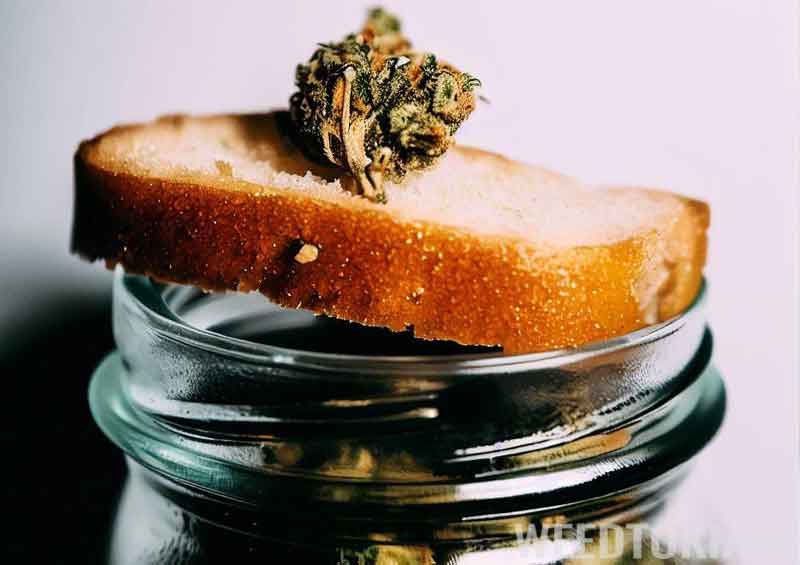
- If your weed loses hydration, it will lose potency and flavor. The best ways to rehydrate weed are fresh pot leaves, citrus peel, kitchen sponges, paper towels, bread pieces, lettuce, wine corks, breath, steaming, and humidity packets.
- Proper storage is essential to maintain quality factors like flavor, potency, and freshness. Make sure to store your weed in air-sealed jars and keep it in a dry, dark place.
- Signs of bad weed include dryness, off-flavors, musty odors, and moldy growth on the bud.
- Smoking moldy or dry weed is not recommended. However, there are usually no health consequences on individuals. If you can bear the smell, knock yourself out.
Rehydrating is an easy way to give you moister, fresher buds and is especially valuable if you expect your buds to last more than a week. If you’re left with dry weed, you mostly likely don’t want to smoke it. Those brittle buds can turn to powder in your fingers and bowl as they make their way from your fingertips.
It seems logical that once terpenes are lost, it may be difficult, if not impossible, to recover them. Having experience with the average humidity packet, I have found that the remaining terpenes are preserved and brought back to life. The decay of marijuana terpenoid levels over time hasn’t been quantified by any research, so it doesn’t hurt to try to bring your supply back to life.